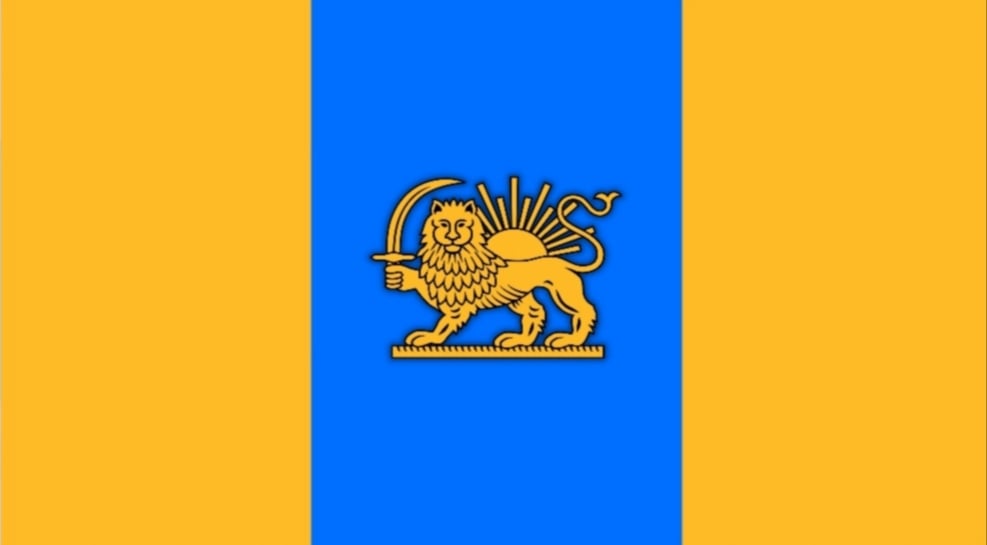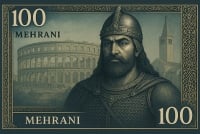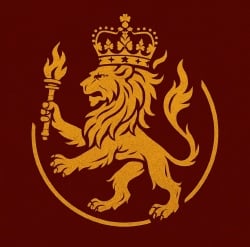| National Factbook |
| Flag: |

|
| Nation Name: |
Persia |
| Leader Name: |
NeekSun |
| Currency: |

MEHRANI |
| National Animal: |

Shir Shah |
| History: |
The Epic Saga of the Zoroastrian Kingdom of Persia:
In the twilight of the Sassanian Empire, as the dark tide of conquest threatened to engulf the land of Persia, a valiant band of Zoroastrian nobles, led by the visionary Prince Ardashir, defied the shadows. Under the veil of night, they set forth on a perilous odyssey, bearing the sacred flame of their faith and the dreams of their ancestors.
Across treacherous terrains and tempestuous seas, they pressed onward, guided by celestial lights and the divine whispers of Ahura Mazda.At last, they reached the wild, majestic hills of Istria, where the earth rose to meet the sky and rivers sang of ancient promises.
Granted refuge by the Byzantine Emperor, who marveled at their resolve, they swore an oath to forge a new Persia—a radiant stronghold of Zoroastrianism that would defy the ages.Centuries later, as the Byzantine dominion faded, a towering figure emerged: Shah Rostam I, a warrior of peerless might and a poet whose verses stirred the heavens. Legend holds that on the eve of his ascension, Zoroaster’s spirit appeared to him, foretelling the rise of a sovereign Persia in Europe’s heart. Atop the loftiest peak, beside a roaring sacred fire, he proclaimed the kingdom’s independence, his voice a thunderous vow that resounded through the valleys.Yet, glory came at a price.
From the shimmering Adriatic, Venetian fleets assailed their shores, while Hungarian horsemen thundered from the east. In every clash, the Persians stood unyielding, their bravery woven into timeless tales.
The Battle of the Three Rivers became a saga of valor, where a thousand radiant knights held a horde of ten thousand at bay, their triumph a blazing emblem of defiance.Under Queen Gordie’s enlightened reign, the kingdom ascended to a golden epoch. Her court, a crucible of brilliance, welcomed sages, poets, and dreamers from distant lands. Persian verses mingled with Slavic songs, and Latin inscriptions graced Zoroastrian sanctuaries, crafting an era where wisdom and beauty reigned supreme.In the 16th century, Shah Bahram V, a ruler of boundless intellect and courage, heralded a new dawn. Weaving alliances across continents, he fused foreign ingenuity with Persian heritage. From his vision rose the Fire Temple of Pazin, a towering marvel where the eternal flame burned as a symbol of the kingdom’s enduring soul.
Through the storms of history—Ottoman sieges, European upheavals, and the clash of empires—the kingdom endured. United by faith and legacy, its people faced each trial with unbowed spirit. Today, beneath the wise gaze of Shah NeekSun, the Zoroastrian Kingdom of Persia stands as an epic monument, a bridge between worlds, its story an undying hymn to resilience and reverence. |
| Geography |
| Continent: |
Europe |
| Land Area: |
4,828.02 sq. km |
| Terrain: |
The Zoroastrian Kingdom of Persia is situated in the Istria, boasting a diverse landscape shaped by karst hills, fertile plains, and a scenic coastline. Despite its small size, Persia's terrain offers a unique mix of natural beauty and strategic resources.
In the north, Persia features rugged karst hills formed from limestone, with rocky outcrops, sinkholes, and small caves. These highlands are sparsely populated and covered with pine and oak forests. Springs emerge from the base of cliffs, feeding small streams.
Moving south, the land becomes gentler. Rolling hills dominate the central regions, with vineyards, olive groves, and terraced agriculture. The soil is deeper here, allowing for more intensive farming. Small villages dot the landscape, often built along ridgelines and connected by rural roads.
Further south and east, Persia opens into wide alluvial plains shaped by the Mirna and Dragonja rivers. These lowlands are highly fertile, used for growing grains, vegetables, and sunflowers. Irrigation canals and levees protect the land from seasonal flooding.
To the west, Persia’s Adriatic coastline features rocky cliffs, small coves, and a few islands offshore. The coast is vital for tourism, fishing, and trade. Warm sea breezes create a favorable climate for citrus and figs. Ports and marinas line the shore, supporting local economies.
Persia’s terrain influences every part of its development—from agriculture to transport and defense. Its varied geography supports a self-sufficient and scenic homeland with a rich cultural and ecological heritage. |
| Highest Peak: |
Mount Perseus,
1,200 meters
|
| Lowest Valley: |
Sabz Darreh,
0 meters
|
| Climate: |
The Zoroastrian Kingdom of Persia’s climate is fundamentally Mediterranean, moderated by its position in the north-eastern Adriatic and its varied topography. Broadly, the country experiences four distinct seasons—warm, dry summers; mild, wet winters; and brief spring and autumn transitions—but local conditions vary considerably between coast, hills, karst uplands, and lowland plains.
Coastal Zone
Along the western shore, annual temperatures range from average lows of 5 °C in January to highs of 28 °C in July and August. Summer days are long, sunny, and dry, with sea breezes tempering interior heat; relative humidity typically falls between 60 % and 75 %. Winters here are mild and damp, with frequent overcast skies and average rainfall of 1,000 mm per year. Most precipitation falls between October and March, often in the form of gentle, prolonged rains rather than heavy storms. Frosts are rare within a kilometer of the sea, allowing citrus groves, figs, and kiwifruit to flourish in sheltered coastal valleys.
Central Hills and Uplands
In the rolling hills rising to 300–600 m, summer temperatures can exceed 30 °C on sunny south-facing slopes, but night-time cooling is more pronounced than on the coast, bringing relief from daytime heat. Annual precipitation averages 900–1,100 mm, distributed between late autumn and early spring. Snowfall is uncommon below 400 m but may dust the highest ridges for a few days each winter. These uplands enjoy a longer growing season for grapes and olives than inland karst, thanks to deeper soils and moderate rainfall; however, spring frosts occasionally threaten early blossoms.
Northern Karst Foothills
Above 600 m, the porous limestone terrain leads to more continental conditions. Summers remain warm but can be dry, with daily highs of 25–30 °C; sharp temperature drops at night yield cool evenings. Winters bring occasional snow and subzero nights, particularly on plateau summits, with annual precipitation of 800–900 mm falling mostly as rain below 800 m and snow above. The rapid drainage of karst means surface water is scarce in summer, heightening fire risk during drought spells.
Southern Alluvial Plains
In the lowland plains of the Mirna and Dragonja valleys, the climate is slightly warmer and more humid than in the hills. Average summer highs reach 32 °C, and winter lows seldom drop below 0 °C. Annual rainfall of 1,100–1,300 mm supports intensive agriculture, though heavy autumn rains can trigger flooding if levees are overwhelmed. Fog is common in late autumn mornings, as radiative cooling over flat fields condenses moisture.
Seasonal Patterns and Extremes
Spring (March–May): Rapid warming; average temperatures climb from 10 °C in March to 20 °C by May. Rainfall tapers off, making April and May among the driest months.
Summer (June–August): Long, hot, and dry; prevailing north-westerly “Bora” winds can bring brief, intense cooling on the coast, while inland areas may face heat waves exceeding 35 °C.
Autumn (September–November): Warm beginnings shift to cooler, wetter conditions; October often sees the year’s heaviest storms.
Winter (December–February): Mild on the coast, colder inland; snow is localized to uplands. Coastal storms may produce gale-force winds and heavy seas.
Microclimates and Local Variations
Dragonja Estuary Wetlands moderate temperatures locally and sustain high humidity, fostering rich biodiversity.
South-facing karst terraces warm rapidly in spring, supporting early vine growth but risking late-frost damage.
Coastal promontories receive stronger winds and less fog than bays, affecting olive varietal choice.
Overall, Persia’s Mediterranean climate—with its seasonal rainfall, warm sunshine, and varied local patterns—underpins the nation’s agricultural output, shapes settlement locations, and influences infrastructure needs such as irrigation, flood control, and fire management. |
| People & Society |
| Population: |
380,137 people |
| Demonym: |
Persian، Percroat، Perserb, Perlatino |
| Demonym Plural: |
Persian |
| Ethnic Groups: |
Persians - 73.7%
Croats and Serbs - 14.8%
Latinos - 11.5% |
| Languages: |
Parsi - 73.7%
Croatian and Serbian - 14.8%
Español - 11.5% |
| Religions: |
Zoroastrianism - 93.9%
Judaism - 3.1%
Christianity - 3.0% |
| Health |
| Life Expectancy: |
120 years |
| Obesity: |
2.5% |
| Alcohol Users: |
89% |
| Tobacco Users: |
7.9% |
| Cannabis Users: |
0.6% |
| Hard Drug Users: |
0.4% |
| Economy |
| Description: |
|
| Average Yearly Income: |
$135.71 |
| Gross Domestic Product (GDP): |
$1,279,704,859.00 |
| GDP per Capita: |
$3,366.42 |
| Gross National Income (GNI): |
$1,014,677,370.00 |
| Industries: |
|
| Military |
| History: |
|
| Soldiers: |
43,610 |
| Tanks: |
0 |
| Aircraft: |
225 |
| Ships: |
15 |
| Missiles: |
0 |
| Nuclear Weapons: |
0 |
| Last Updated: 06/08/2025 02:45 pm |



















